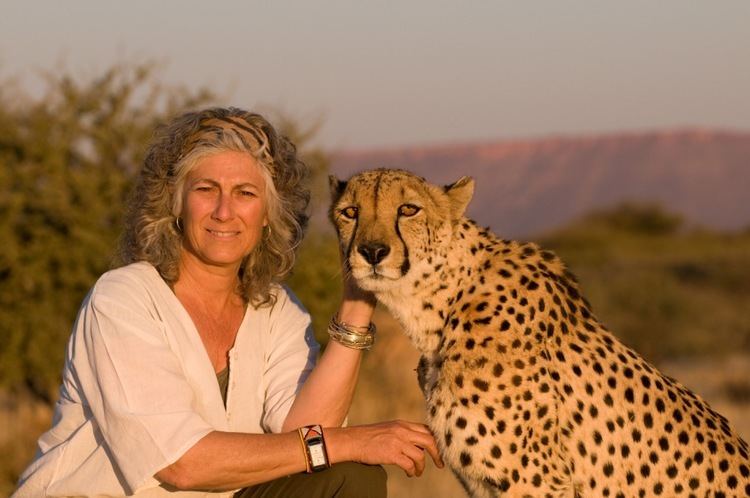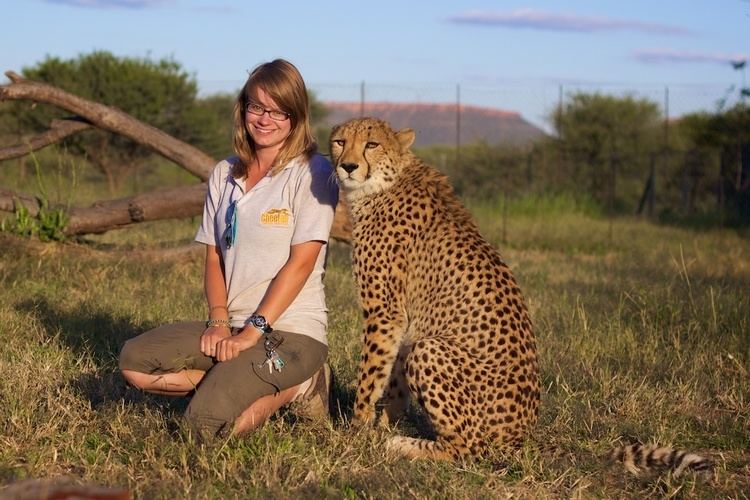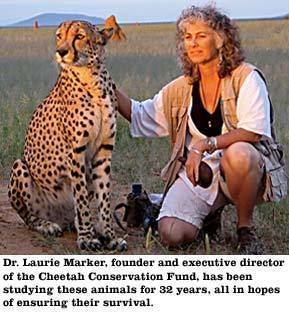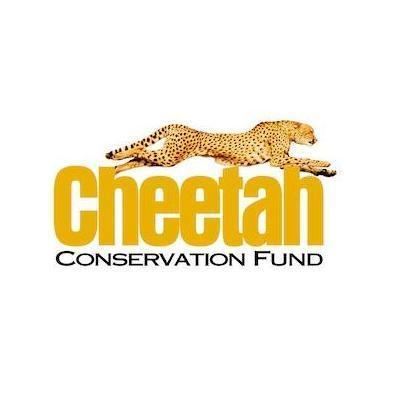Founded 1990 | ||
 | ||
Similar San Diego Zoo Global, Wildlife Conservation Network, Panthera Corporation, Wildlife Conservation Society, Snow Leopard Trust Profiles | ||
Founded in 1990, the Cheetah Conservation Fund (CCF) has as its mission to be the world’s resource charged with protecting the cheetahs and ultimately ensuring its future on our planet. CCF will work with all stakeholders within the cheetah’s ecosystem to develop best practices in research, education and ecology and create a sustainable model from which all other species, including people, will benefit.
Contents
- The work of the Cheetah Conservation Fund
- Cheetah biology
- Cheetah ecology
- Human effects on the cheetah
- Assisted reproduction
- Dr Laurie Marker
- AwardsNominations
- References

The CCF is based in Namibia, the country with the largest and healthiest population of cheetahs left in the world. Its Research and Education Centre is located 44 km. east of Otjiwarongo.

The non-profit organization has developed a diverse range of programs to scientifically study cheetah physiology, its behavior, habitat, prey species and human and wildlife conflict issues. The results of these scientific studies are disseminated internationally via publications and presentations, and the ever-expanding scientific database is utilized to develop strategic education and conservation programs.

Both within Namibia and worldwide there is now far greater awareness of the value of the cheetah within the ecosystem, and its endangered status. Encouragingly, increasing numbers of Namibian farmers (on whose land the majority of wild cheetah live) are implementing predator-friendly livestock management techniques.

The work of the Cheetah Conservation Fund

CCF's conservation and educational efforts are supported by on-going research used to develop policies and programs to sustain the cheetah population in Namibia and as a model for cheetah conservation programs in other countries such as Botswana, Kenya, South Africa, Algeria and Iran.
Cheetah biology

CCF staff conducts field research to gather data on distribution, behavior, biology, population demographics, livestock/cheetah interactions, and health of cheetahs.
In order to influence national policy in favor of cheetah conservation, identify conservation priorities for cheetah, or assess the effectiveness of management action, CCF is currently developing indirect censusing techniques to provide consistent and reliable biological data. Building on long-term research on cheetah in Namibia, this project will field test and calibrate methods for cheetah censusing using camera-trap mark recapture and spoor (paw print) tracking. A cheetah genetics laboratory will provide support to the research and conservation endeavors necessary to save the cheetah, by using modern molecular techniques.
Cheetah ecology

The overall goal of the program is to enhance the long-term survival of the cheetah and other key indigenous wildlife species on Namibian farmlands by developing a habitat improvement program that is both ecologically sound and economically viable.

CCF looks at cheetah and other predator population sizes, habitat, prey density and cheetah movements, and behavior in the Waterberg Conservancy (total 2,000 km2) and the Otjiwarongo farming area (15,000 km2). The CCF Research Center Farms (total 250 km2) are extensively studied, including habitat and prey species.
The project also includes testing and monitoring methods of harvesting thickened (encroached) bush and design a scheme that is appropriate for farmland habitat and is beneficial to the landowners. CCF is developing an international market for bush-based products, Bushblok, that assures the long-term sustainability of appropriate levels of harvest. Within Namibia, CCF markets a firelog product as an affordable alternative to wood harvesting. Based on the results of the pilot project already conducted, habitat restoration efforts can be scaled up to restore cheetah habitat on an ecologically appropriate scale. This would also provide a long-term income-generating, self-sustaining conservation development project for the CCF.
The program adds to and maintains an extensive physiological database and a Genome Resource Bank.
Human effects on the cheetah
The CCF investigates non-lethal predator mitigation to eliminate the need for ranchers to kill cheetah, and issues relating to cheetah in captivity. Aspects of this program include:
Loss of habitat, conflict with humans, as well as its own loss of genetic variation, are the main threats facing the cheetah today.
Assisted reproduction
A large threat within the cheetah population is inbreeding in captive cheetahs and the Cheetah Conservation Fund has begun the practice of assisted reproduction including techniques such as artificial insemination, in vitro fertilization, and cryopreservation. Artificial insemination has increased the probability of cheetah impregnation as well as viable offspring. Artificial insemination gives researchers the ability to enhance gene flow between wild cheetahs as well as captive cheetahs, decreasing the negative effects of inbreeding. Artificial insemination also promotes gene flow because this technique allows scientists to breed sexually incompatible cheetahs (zoos). In vitro fertilization makes breeding cheetahs easier because researchers do not have to transport cheetahs from the wild to breed with the cheetahs in captive-breeding programs. Artificial insemination is important for researchers to be able to produce strong offspring from genetically valuable cheetahs. In vitro fertilization also gives researchers the option to temporarily capture female cheetahs to impregnate and raise healthy young and then release after short periods of time. Due to cheetahs' being easily susceptible to certain types of viral and bacterial diseases, cryopreservation, allows scientists to preserve the embryos and gametes of genetically strong cheetahs from the wild and inseminate captive-bred cheetahs, enhancing the allele frequency of specific genes. Cryopreservation is one of the few techniques in which researchers are able to inseminate captive cheetahs with pathogen-free gametes. The preservation of gametes and embryos of cheetahs has given researchers and conservationists the tools to understanding the basic reproductive biology of cheetahs, creating a path for researchers to develop better ways to breed and maintain cheetahs.Dr. Laurie Marker
Founder and executive director of CCF founded in 1990. Her interest in cheetahs was sparked while working at Wildlife Safari early in her career. In the United States she developed a successful captive-breeding program at Oregon's Wildlife Safari in the late 1980s. She is the ongoing stud bookkeeper on all captive bred cheetah genetics and maintains the 'studbook' which is a detailed documentation of cheetahs in captivity. In 1991 after years of study on cheetah conservation she moved to Namibia, Africa and Co-founded CCF. Her first trip to Namibia was in 1977 where she was involved in the first project where a captive bred cheetah was released into African landscape. During her research in 1977 she learned of the rising problems between cheetahs and neighboring farming communities. Her research provided new insight to the scientific community on cheetah genetics. She was the first to study cheetahs in the depth and each new discovery was a groundbreaking development in understanding the species. Her improvements to the conservation plan in Namibia through intensive genetic and biomedical research, education and species taxonomy earned her the recognition in Time Magazine Hero's for the Planet. She completed her PhD in Zoology at the University of Oxford in the United Kingdom in 2002, as well as publishing many scientific journals and press articles throughout her career.
"I set up Cheetah Conservation Fund back in 1990 to find out more about how cheetahs could live on the landscape with the people on whose land they were living." - Dr. Laurie Marker
Awards/Nominations
Marker has been the recipient of multiple awards and recognition since her start in conservation biology. in 1996, she was the vice chair of the World Conservation Union Species Survival Commission Cat Specialist Group. She was awarded the Zoological Society of San Diego's Lifetime Achievement Award and Tech Awards; Intel Environmental Laureate in 2008. She won the Tyler Prize in 2010 as well as the Explorers Club's Lowell Thomas Award. The Namibian government has recognized her for being an influential asset in conservation and environmental awareness.
